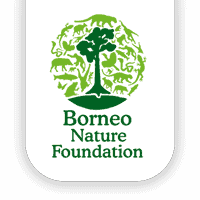
In this era, conservation is a key issue that is very often talked about. The damage caused to the Earth continues day after day. To help alleviate the damage, many NGOs work together by maintaining the natural world. The forest, in particular, is one area that is diminishing and disappearing every day, and urgently needs protecting.
Men, women, and even children are working to maintain the health of our Earth. As a leading example, Yunsiska Ermiasi, who is familiarly called Mbak Siska, is a Dayak woman born in Central Kalimantan, who loves nature. She was born in a village that is very rural, in a culture that respects the forest and promotes knowledge of the forest and how to protect it.
“Since I was little, I loved playing in the forest, sometimes helping my mother to find some food. The forest always provides food for us, from plants to animals that we can get for free. We always take just enough to eat, it’s never too much.” Siska said, smiling.
Siska explained, her love of the forest made her even more curious about forests and peatlands. Therefore, she studied agriculture in peat swamps. “This peat is a unique land, it can be like a sponge and in it, there is water traffic,” she said.
Siska joined the Borneo Nature Foundation (BNF) in 2016 and has served as Deputy Director since 2018. When Siska first entered the peat swamps, she recalled that “Walking in peat mud is very tiring, in fact, I was very tired and I felt almost faint. On the other hand, this makes me happy and addicted to entering the forest more often than I did in my childhood.”
The challenge of working in the field of conservation can be very difficult for a woman, with many physical dangers, as well as societal challenges. The remote location of the project can also become time consuming, costly and difficult to integrate with local communities.
“The work that I do is continuous, so it cannot be seen in just a short time, and that makes me not easily complacent. Sometimes I am afraid when entering the forest because the dangers are not visible and often come suddenly. But the most difficult thing is actually facing the community, raising awareness of the importance of nature conservation. Good survival is very difficult because it changes the mindset and habit,” Siska revealed.
Siska added that the process of starting from scratch was a challenge that made her learn more and develop. But behind all the challenges she has faced, there have been many benefits for the community and also for the environment. Moreover, one of the programs she runs can also be useful to help the local economy.
“We have a Community Nursery, we provide a place for plant nurseries, we also provide planting facilities, and we will buy seeds from the community that will grow again. The point is they invest without any capital, and we buy the results at a reasonable price,” she said.
The Community Nursery (CN) made her learn many things, about how to embed the reforestation concept into the community, by the community and for the community. The CN is one of the real activities in the process of restoring forests and maintaining survival. The project was the result of collaborating with BNF, The Orangutan Project and Darwin Initiative.
“Teaching the community to interpret obligations and preserve the forest and all its contents. Like my process in CN activities, seeing the seeds grow big, then get bigger and ready to plant, until successfully growing in the forest after a few years made me appreciate the life process. My life is like a plant that grows from seeds, therefore I really like seeing plants,” she added while laughing.
There are two projects that she is very proud of, namely MPA (fire-fighting communities) and Hydrology. In the MPA program, she and the fire-fighting team formed in the community to protect the forest from the fires that hit every year. Pioneering from the start, the program recruits several local people to join, to think for themselves from the concept to the strategy. MPA is still running well in Kereng Bangkirai.
Siska explains that she feels proud of the hydrology restoration team. “Many aspects of the Conservation program improved year after year, as well the community engagement and participation. The dams built by the community teams, help to keep the peatlands wet, and minimise fire risks.”
“In this day and age, there is no difference between men and women in the field of conservation, they all have their own fighting spirit. Women are very important in conservation because in making decisions we always consider many things because making decisions is not only rationally but also with feelings,” she concluded.

Photo by Pau Brugues Sintes | BNF | UPT LLG CIMTROP
Written by: Yohanes Prahara (BNF’s Content Creator)


